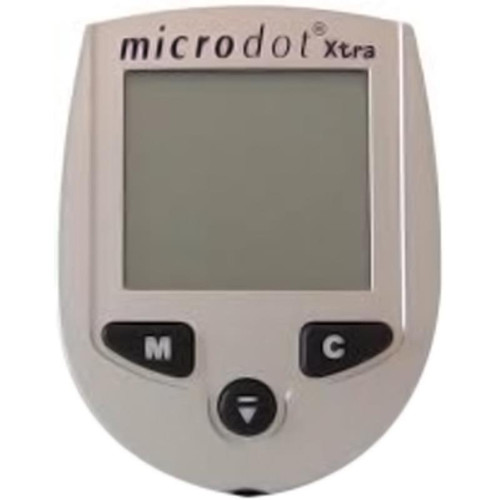Essential Diabetic Care Supplies for EMS Teams
Feb 1st 2024
According to the Centers for Disease Control and Prevention, nearly 37.3 million Americans have diabetes, nearly one in ten people, which means that EMS teams are likely to interact with diabetic patients on a regular basis. Whether the emergency call is directly related to the patient’s diabetic distress or not, it is a complicating factor for which first responders need to have the ability to accurately test and diagnose the patient’s blood glucose levels for an appropriate treatment plan. A fully-stocked diabetic care kit is an essential part of any ambulance’s supplies. QuadMed offers a full selection of diabetic supplies including glucometers, test strips, and lancets designed for professional use by first responders.

The glucometer is the key point of any blood glucose monitoring system; most of the additional accessories must be compatible with the glucometer. When selecting a blood glucose monitor for professional use, there are a few different factors to consider. As first responders, teams will interact with a wide variety of patients, and unlike those monitors that are used in the home healthcare system, an EMS glucometer must be able to be used with multiple patients. Additionally, a high level of accuracy is desired to prevent misdiagnosis as many diabetic symptoms are similar to, or can mask other illnesses. Cross contamination is also of greater concern for first responders; many healthcare provider glucometers offer test strip ejection so that the caregiver doesn’t need to physically touch the used strip.

Another consideration is the amount of blood necessary for an accurate reading; a smaller amount required is of particular importance for elderly or otherwise frail patients. Additionally, some meters also offer second chance testing, wherein additional blood can be applied to the same test strip if the initial testing amount was not enough for an accurate reading. A large screen on the glucometer makes it easier to read, and some models may also offer backlit screens for greater visibility in low light conditions. A fast, accurate glucometer that is designed for healthcare workers is a vital diagnostic tool for every first responder. The microdot Xtra Blood Glucose Meter is a consistent bestseller that is designed to meet the needs of first responders. This meter requires only a 0.6µL sample size and has an automatic fill check that only runs if there is enough blood present; once testing is complete a strip ejection button reduces the risk of cross contamination.

Diabetic test strips are required for the use of any glucometer. Test strips are proprietary to the model of glucometer and care must be taken to ensure that the correct version of test strip is chosen for compatibility. Typically test strips are sold in packages of 50 or more strips per box or container; with every new package of strips the glucometer should be coded with the new box. Newer glucometers may also be featured with no code technology, which saves time and effort, making them a great option for EMS teams. Microdot Xtra Test Strips are compatible with the microdot Xtra meter previously mentioned and are available in a box of 50 strips. In order to ensure that the blood glucose monitoring system is functioning properly, control solution should be used every time a new container of test strips is opened, as well as on an on-going basis according to the manufacturer’s guidelines. Control solution contains a specific amount of glucose and is generally available in high or low concentrations. As with test strips, control solution is proprietary to the specific brand or model of glucometer that is being used; because the solution contains a known amount of glucose it provides a baseline that the glucometer and test strips can be tested against to ensure that the meter is providing an accurate reading. This is particularly necessary for meters used by EMS teams due to the variety of patients on which the meters are used, as well as the variable conditions in which the meters may be subjected to during a typical call. Microdot Control Solutions are compatible with all microdot branded glucometers and test strips and are sold as a pack of high and low solutions. Microdot recommends using control solution whenever a new vial of test strips is opened, at least once a week, and whenever there is concern that the meter and strips may be inaccurate.

In addition to the glucometer and strips, disposable lancets should also be a part of an EMS diabetic care kit. Lancets are used to prick the patient’s finger or other testing site in order to draw blood for the procedure. Like needles and other collection devices, lancets are available in a range of gauge sizes with the smaller gauge lancets offering greater comfort for thin or fragile skin, while larger sizes offer better control. Lancets are designed with a pressure device in order to quickly break the skin and draw blood. Lancets are disposable and are also available in safety lancets with retractable needles are also available for reduced risk of needlestick injury. Once testing has been completed a set of oral glucose is also beneficial to have on hand for patients with hypoglycemia. Oral glucose is generally available in a ready-to-use gel form with added flavoring to make it more palatable for patients, but may also be available in powder or tablet form. Transcend Glucose Gel offers an American Diabetes Association recommended 15g of glucose in a strawberry-flavored gel syrup that works quickly to help treat hypoglycemia without over-treating. Of course, in order to facilitate a fast response, a sturdy carry case ensures that the diabetic care kit is organized and ready to deploy at any emergency scene.
Diabetic care supplies are essential for first responders and QuadMed offers a full range of glucometers with compatible test strips, control solution, and other diabetic supplies that are designed to meet the needs of EMS teams.

